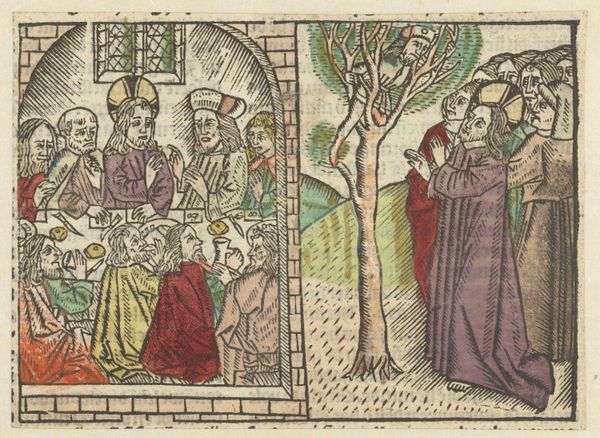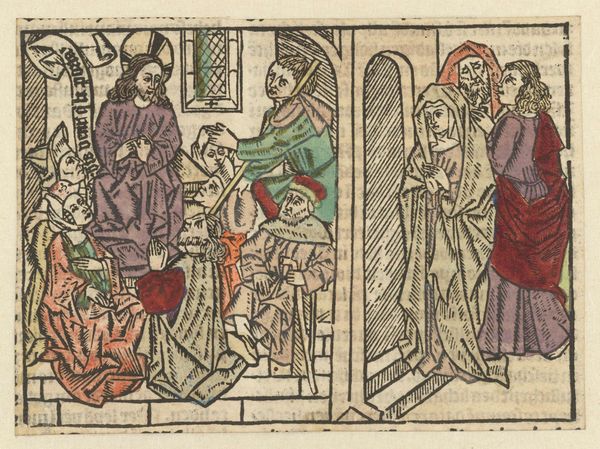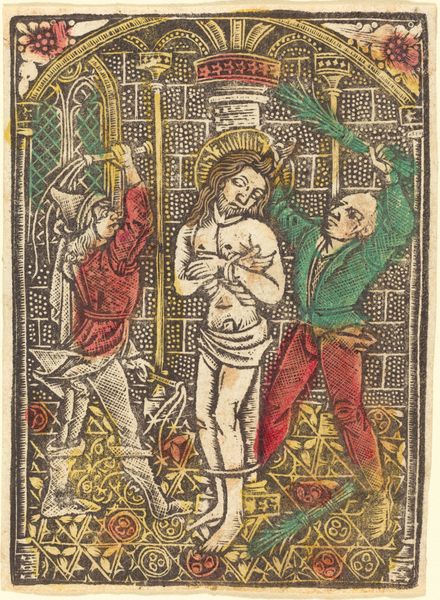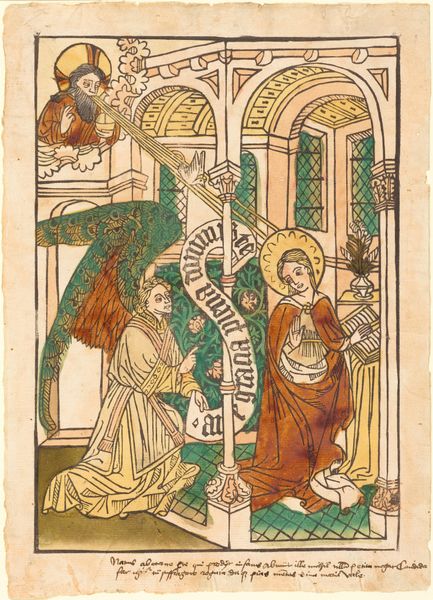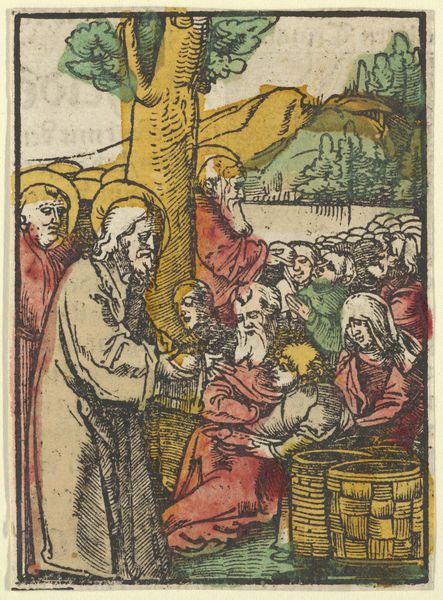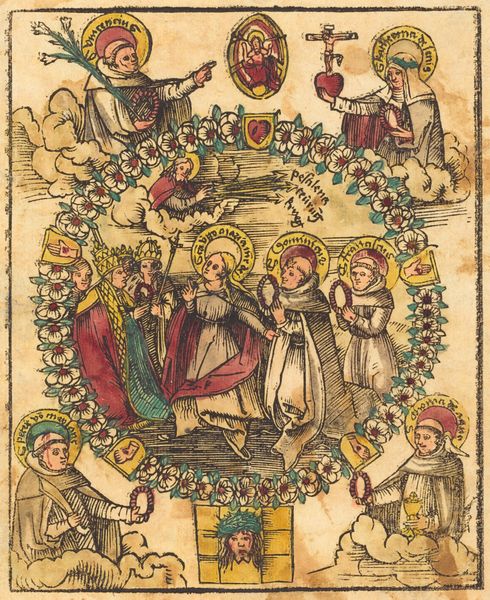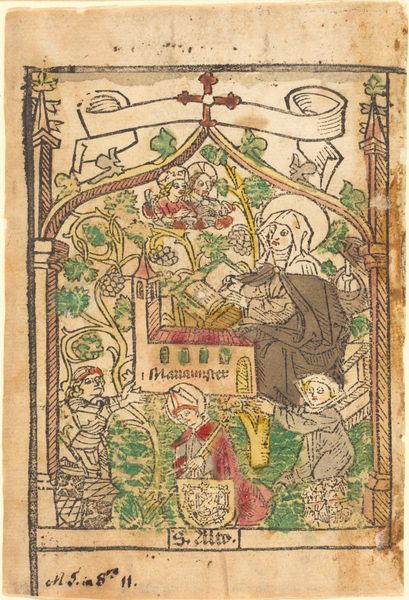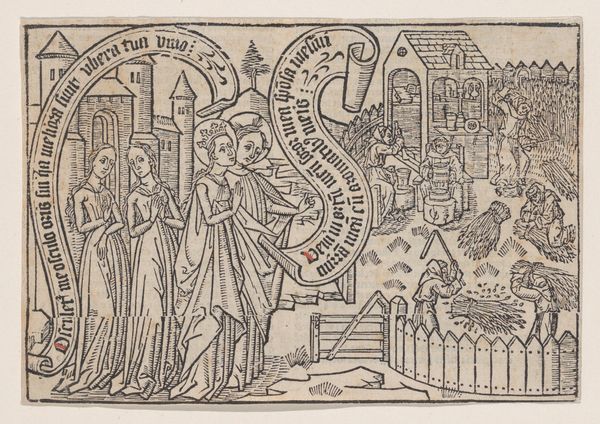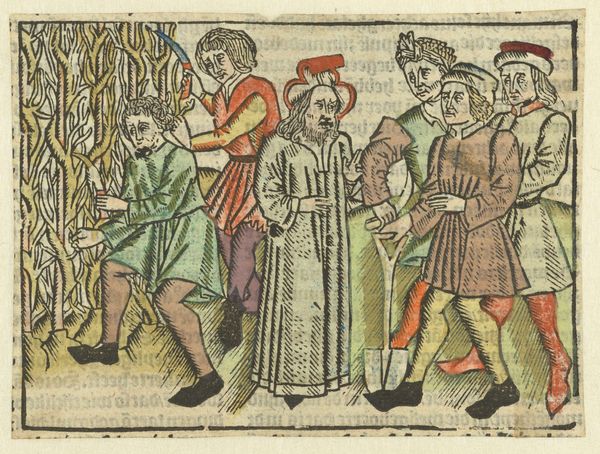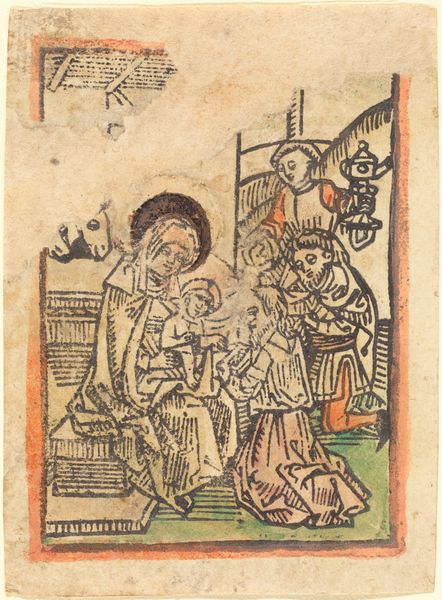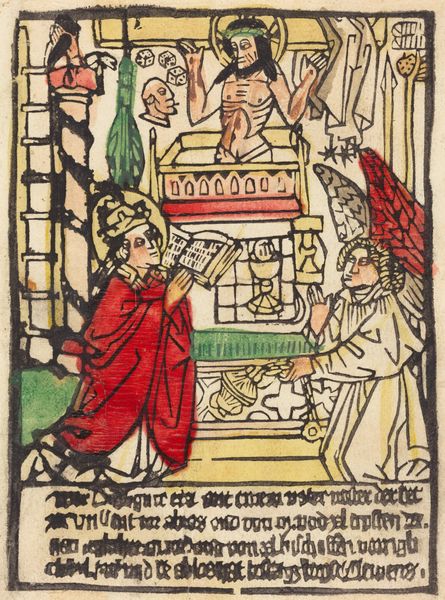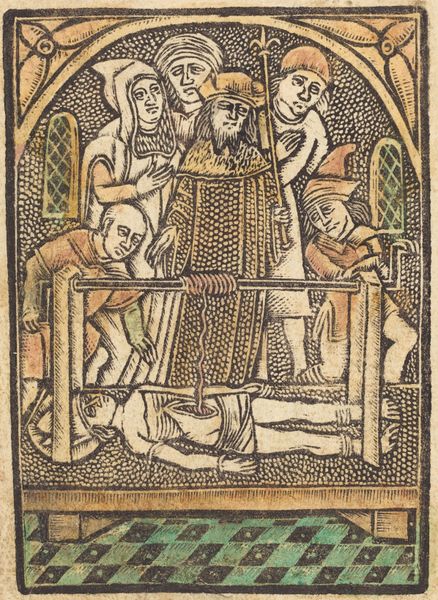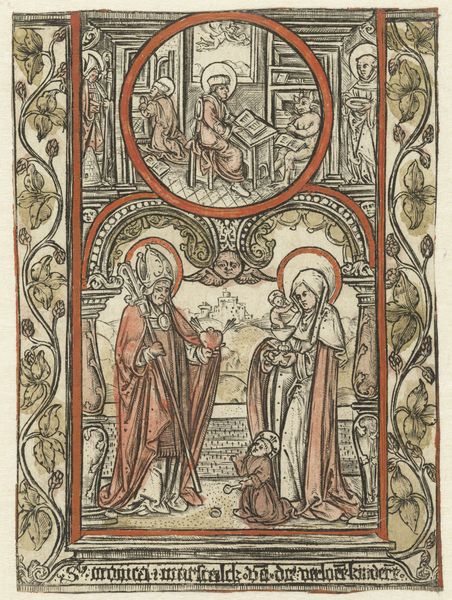
drawing, print, paper, ink, woodcut
#
drawing
#
narrative-art
# print
#
paper
#
ink
#
folk-art
#
woodcut
#
genre-painting
Dimensions: 407 mm (height) x 298 mm (width) (bladmaal)
Editor: This piece, "The Wedding at Cana and Christ," created sometime between 1770 and 1814, appears to be a woodcut print with ink on paper. The folk-art style is striking. What do you make of the ways in which it was made? Curator: It's fascinating to consider this from a materialist perspective. The woodcut medium itself speaks to a particular mode of production and consumption within a specific social context. Woodcuts were a relatively accessible and reproducible form of image-making. How do you think this accessibility would have affected its meaning or function for its intended audience? Editor: I imagine it would allow wider circulation and affordability, making religious imagery more available to common people, as popular culture. Curator: Exactly. And this challenges traditional art historical narratives that prioritize unique, "high art" objects. Think about the labor involved in creating this work – from the carving of the woodblock to the printing process itself. What does this tell us about the relationship between art, craft, and labor? Editor: It suggests a blurring of boundaries, elevating craft to a form of art and also showing religious imagery as products of a workshop, perhaps a family concern rather than something inherently unique. Curator: Precisely. And what about the use of colour, crudely added as an afterthought? Is it accidental or does that too speak to both process and a popular desire? Editor: Well, I hadn't thought of that...The vibrant colours are eye-catching but basic and feel part of the folk tradition. Perhaps it speaks to more modest means? I've never considered accessibility as integral to the creation of religious work. Curator: See how the consideration of materials, process, and audience open it up!
Comments
No comments
Be the first to comment and join the conversation on the ultimate creative platform.
